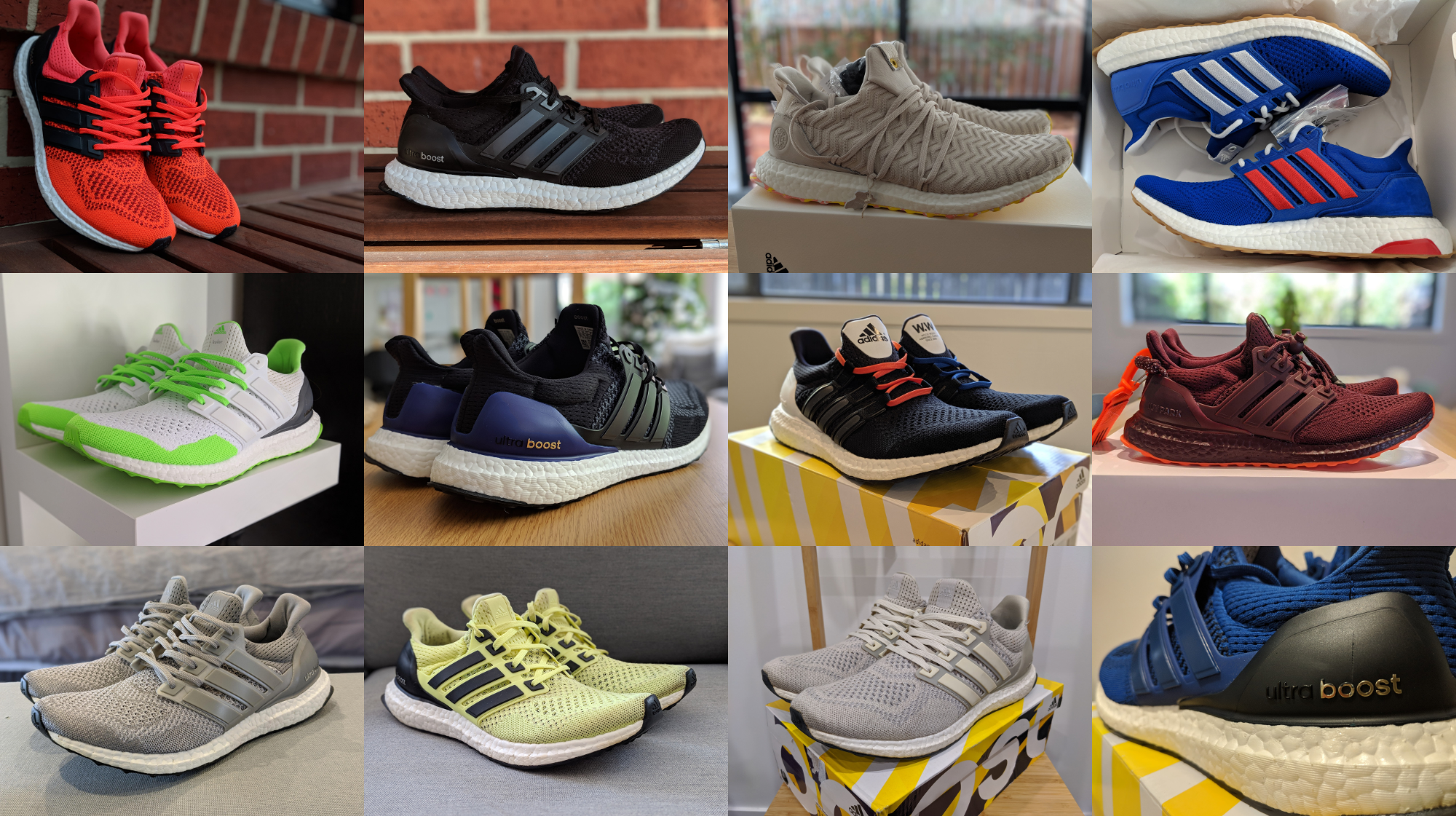I've been collecting sneakers for around 25 years now. In that time I've seen everything from the emergence of Dunks to...the return of the Dunk, and everything in between. I've also owned and worn a lot of shoes in that time, but today, I want to tell you about my favourite. The story of the greatest sneaker ever made.
It is the early 2010's. Adidas, one of the world's largest sportswear companies, is in the dumps. Nike, their main competitor, has been eating their lunch for years and the company, once synonymous with everything from football to streetwear, is falling short on all fronts. An over-reliance on Adidas' heritage (and the celebrity endorsements that went along with it), coupled with the emergence of new rivals like Under Armor, had left the three stripes in a pretty bad way.
Adversity can breed innovation, though, and it was during these doldrums that AIT (Adidas Innovation Team) linked up with, of all companies, BASF. While maybe best known to consumers as the VHS Guys, BASF are actually a German chemicals company who in the late 2000's had developed a material known as Infinergy, which was notable for three things: it was soft, it could return energy if compressed, and it could withstand all kinds of conditions and temperatures.
Both companies quickly saw potential in this (as did Puma, whose part in this is a whole other story), with BASF eventually selling the Infinergy technology to Adidas, where it was renamed "Boost". Produced as small thermoplastic polyurethane pellets--not too different in appearance from the foam balls you fill a beanbag with--Adidas' plan for Boost involved heating these pellets to form larger masses of the material, which AIT believed could be a modern and radical replacement for stuff like EVA foam as the midsole of choice for running shoes.
The technology made its debut in 2013 on a sneaker known as the Energy Boost. BASF's quaint corporate video from the time gives a scientific breakdown of how the shoe, and Boost, worked:
From a technological standpoint, this was revolutionary. Footwear had never seen anything like this, and just a year later, wearing the second shoe to feature Boost--the adizero Adios Boost--Dennis Kimetto ran what was then the fastest marathon of all time. All of which was great for people making corporate videos and writing Adidas' press releases, but for all its scientific potential, Boost--which was being exclusively targeted at performance runners--wasn't quite taking off in terms of sales.
Then magic happened. In early 2015 Adidas released a third Boost shoe known then as simply the UltraBoost. Again targeted at serious runners, it featured a full Boost midsole (previous shoes hadn't quite allowed the material to run all the way along the sole) along with a second innovation: an upper that was made of not leather or mesh but Primeknit, Adidas' soft, almost sweater-like knit that felt more like a sock than a shoe.
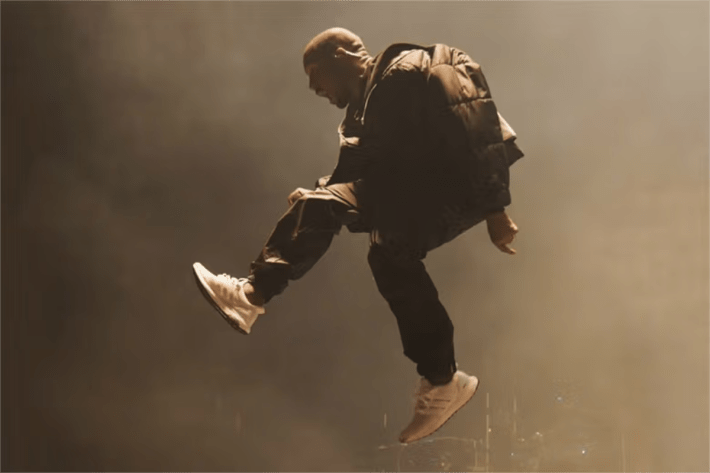
While designed for and marketed at performance athletes, this is not where the shoe's legacy would lie. Because in May 2015, back when he was actually a bonafide global superstar, Kanye West wore a pair of all-white UltraBoosts onstage at the Billboard Music Awards, and suddenly the shoe started picking up interest from a whole other demographic: sneakerheads.
The state of the serious end of the sneaker market in 2015 was much the same as it is now: people were exhausted by endless rereleases and rehashes of "classics". Into this malaise, the futuristic UltraBoost--and Adidas' NMD, released at the same time and featuring much of the same technology, only designed specifically for casual use--were something new. That made them exciting, and coupled with scarcity (Boost was expensive and Adidas hadn't been ready for sneakerheads to start blowing up demand for it, so only a single factory on the entire planet could produce the sneakers) and a prize piece of celebrity endorsement, the UltraBoost, a shoe originally designed for runners, was about to become one of the most hyped and sought-after sneakers of the decade.
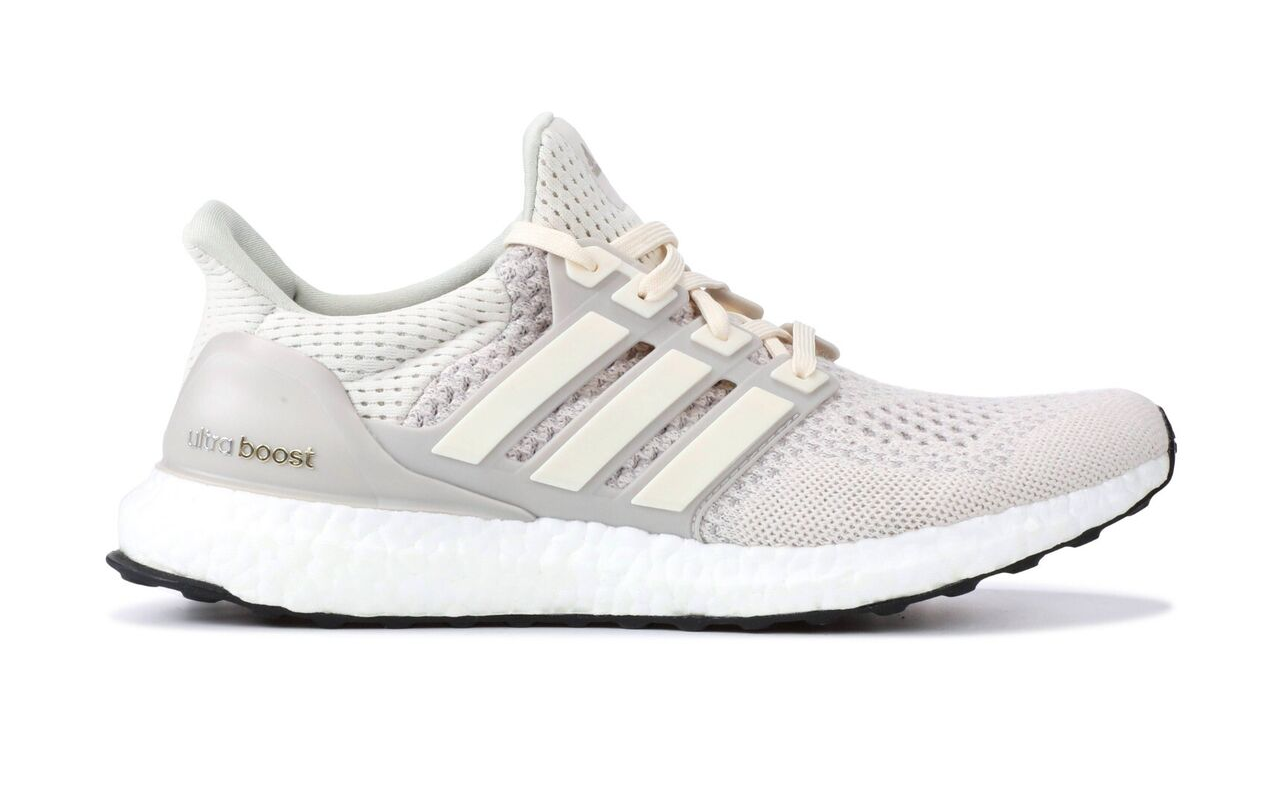
From 2015 to around 2018, the UltraBoost felt unstoppable. It was particularly triumphant in 2016, though, as Adidas was able to successfully pivot away from designing colourways for runners and start retooling the shoe to speak to sneakerheads instead. This 2020 retrospective on Hypebeast details just how explosive demand for the UltraBoost got during 2015-16:
“It’s pretty hard to overstate how big UltraBOOSTs were in those early days of StockX, and most were in-line, simple colorways,” says Jesse Einhorn, senior economist at StockX. “[In 2015] the aftermarket was dominated and monopolized by Jordan Brand. There just wasn’t the same kind of brand diversity and competition you see now, and the UltraBOOST really opened the door more than any other sneaker for the modern-day resell market, where you have a variety of different power players and focal points all competing for people’s attention and money.”
The proof is in the numbers. “Campless [a secondary market tracking platform created by StockX founder Josh Luber] data from 2014-2015 showed that adidas’ entire aftermarket share in 2014 was less than one percent. By 2015, when the UltraBOOST launched it was at 20%, and when StockX launched in 2016, over half of the secondary sneaker market was adidas” says Einhorn. “Ten of StockX’s top 100 best-selling sneakers in 2016 were UltraBOOSTS. More than 90 percent of all UltraBOOSTS on StockX sold for more than retail. There were more UltraBOOSTS than Air Jordan 1s on the list in 2016.”
To give a more personal example of just how red-hot demand for the sneaker was, between 2015-17 I essentially had a second job as an UltraBoost reseller, buying second-hand shoes from runners who had been early adopters, repairing and restoring them, then reselling them to sneakerheads for $100-200 profit at a time.
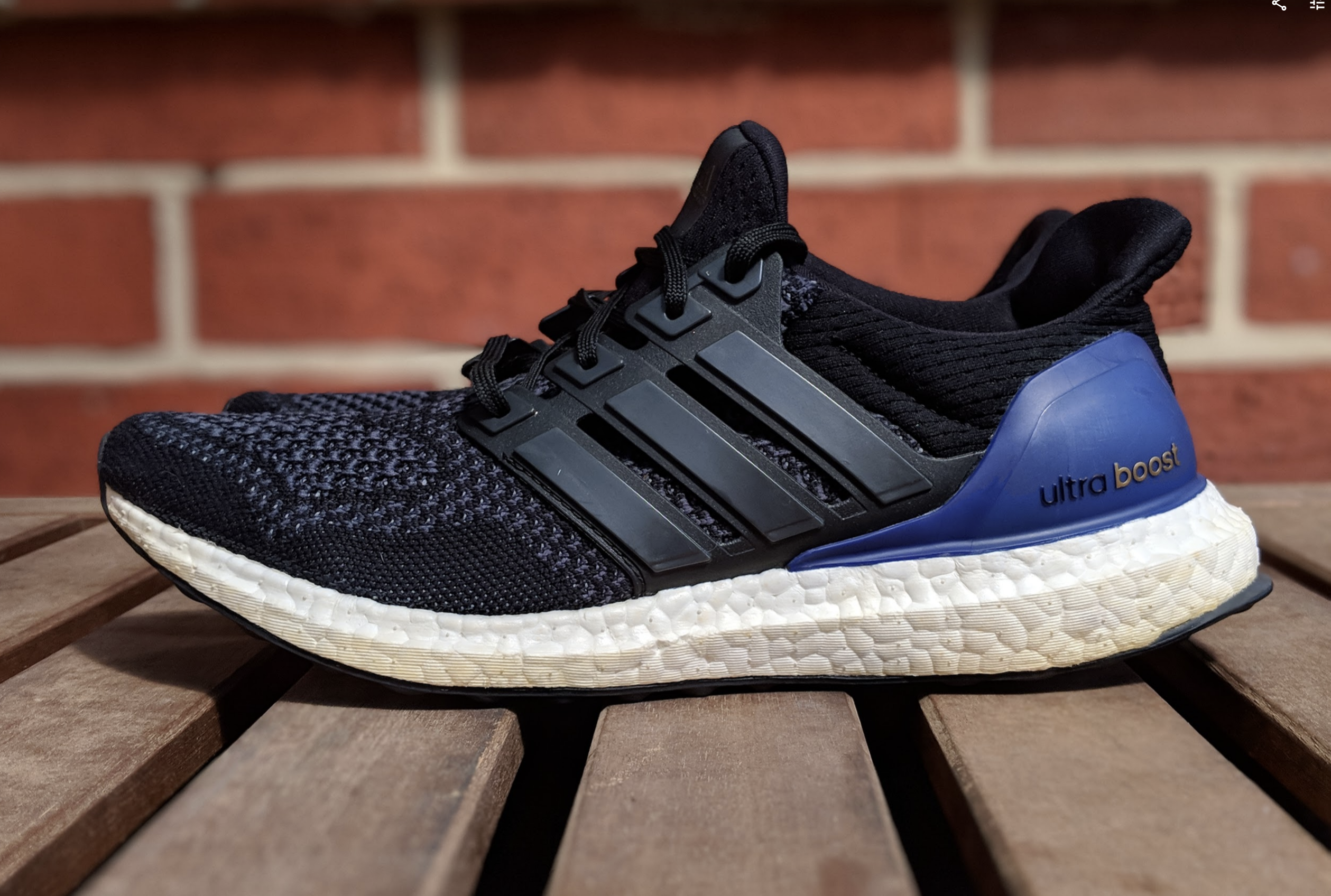
I love everything about this shoe. I love the idea behind it; that it's something based on innovative technology, a shoe pushing boundaries, trying to do something new in an industry that in so many ways is shackled to the past or copying the innovations of others. I love how they look; the arrowhead knit pattern on the toebox, bubbly midsole and angular cage (the plastic on the side that the laces tied into) made them look like something from a space program, a shoe made for Mars, not Earth. It also helped that, despite their original athletic intent, more subdued colourways proved to be extremely versatile shoes, looking just as good paired with some pants at the pub as they did some shorts at the beach.
The thing that blew most people away at the time, though, was the comfort. To frame it in video game terms, wearing Boost for the first time in 2015 after decades spent walking on foam felt like the leap from Super Mario World to Mario 64. Nobody had ever walked in a shoe that comfortable before and, thanks to the diminishing returns of sneaker technology since, may never again. To wear UltraBoosts felt like walking on clouds, the midsole able to absorb even the heaviest step, so not only did they look great, but you could also wear them all day.
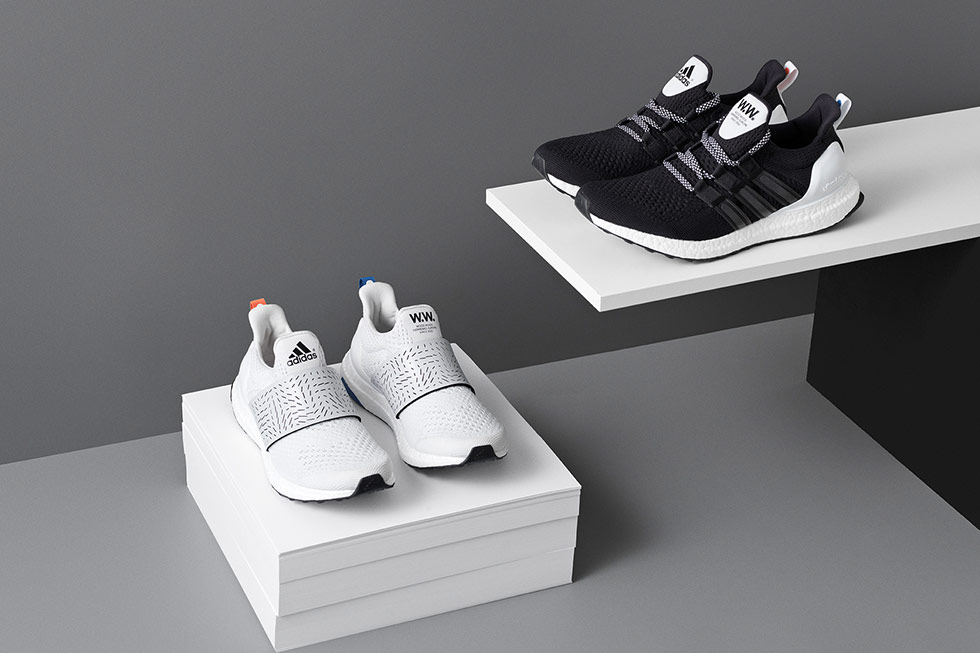
A lot is made of Kanye's involvement in the shoe's popularity in a lot of retrospectives, but I think that's a little overblown. He may have sparked sneakerheads' initial interest in the UltraBoost, but it was Adidas' subsequent laser-sharp marketing of it that really led to the sneaker's success. Sneakers trying to tap into to the streetwear scene normally rely on endorsements from athletes and megacelebs, big licenses and brands (see Nike's recent reliance on Travis Scott and Drake), but the UltraBoost's most sought after releases in its early days were collaborations with boutique fashion outlets, streetwear companies and even menswear websites. Shoes made with/for SNS, Hypebeast, Wood Wood, Highsnobiety, Kolor and Kith really spoke to the scene from the ground level, and made it seem like the UltraBoost was being made just for sneakerheads.
It helped that these insider collabs resulted in some of the UltraBoost's best designs and colourways. Most were understated, simple, dare I say it even tasteful, but there was still room for further innovation as well: a couple of the collabs had taken note that some experimental fans had started cutting the shoe's plastic cage off, so they simply shipped with their cage already gone. Other early standouts included a pair made of merino wool--procured around 40 mins from my house!--and a line based on college sports programs, with Miami's in particularly being some of the most sought after. I ended up owning a ton of UltraBoosts from this time period, ranging from OGs (the first UltraBoost colourway ever released) to Creams, Kolors (more on those in a minute) to a red pair so bright they were called "Solar Red".
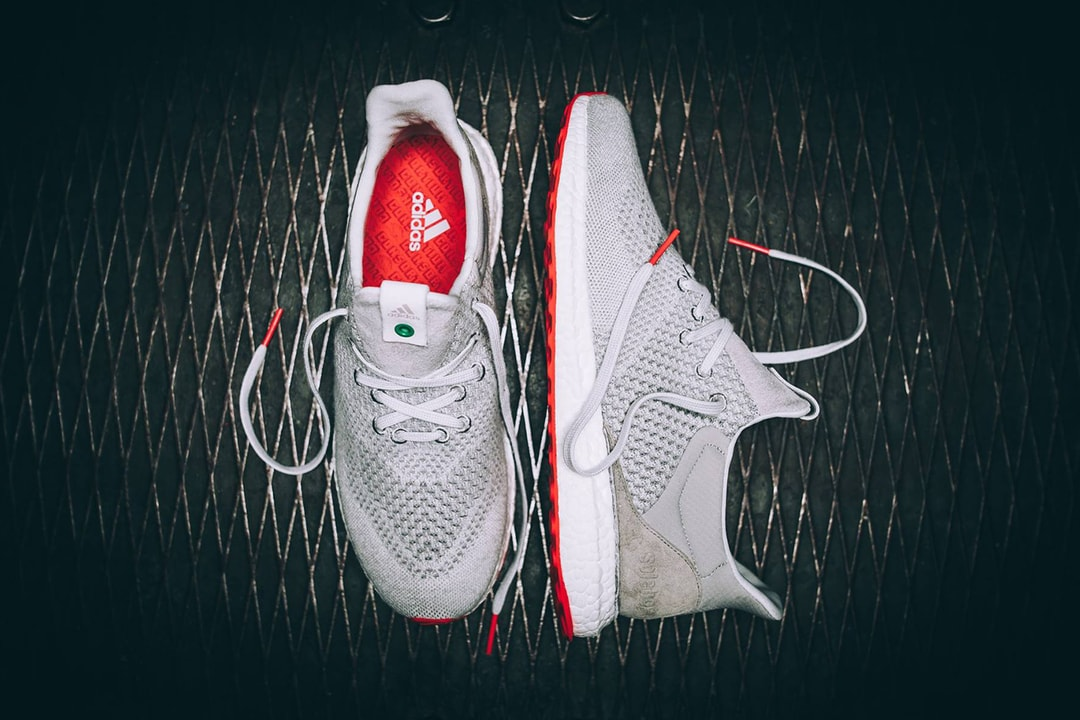
As incredible as the UltraBoost's run in 2015-16 had been, though, in the world of fashion nothing lasts forever. As the UltraBoost moved into the late 2010's, and Kanye's own Yeezy line of Adidas sneakers increasingly captured a lot of the public's imagination, Adidas started getting sloppy. Rather than continue to refine and release new colourways of the original UltraBoost--now known as the UltraBoost 1.0--in 2016 they had dropped the UltraBoost 2.0, UltraBoost 3 and UltraBoost Uncaged in quick succession, new models that retained the overall shape of the shoe but messed with its visual consistency by switching up the knit pattern. And after getting its collabs so right early on, a shift to corny tie-ins like Game of Thrones sapped the line of some of that hard-earned cred.
These final days of the UltraBoost's golden age still produced some good efforts from time to time--A Kind of Guise and Engineered Garments' collabs are particular faves of mine--but by 2018, with Adidas having flooded the market with derivative, less appealing UltraBoost models (they'd followed the disappointing UltraBoost 3.0 with...the even uglier UltraBoost 4.0), the writing was on the wall. The original UltraBoost had blown up in part because it was futuristic and interesting, sure, but they were also hard to find, and sneakerheads love nothing more than a shoe that's hard to find.
I remember when I finally got hold of a pair of Kolors--my all-time favourite colourway, with only a handful of pairs released worldwide--and on a trip to Sydney being repeatedly stopped in the street, and in sneaker stores, by people wanting to talk about them. Once you could just walk into a store and buy a pair of UltraBoosts, pairs that had been produced in their tens of thousands instead of hundreds, for many they became just another pair of general release shoes among countless others options.
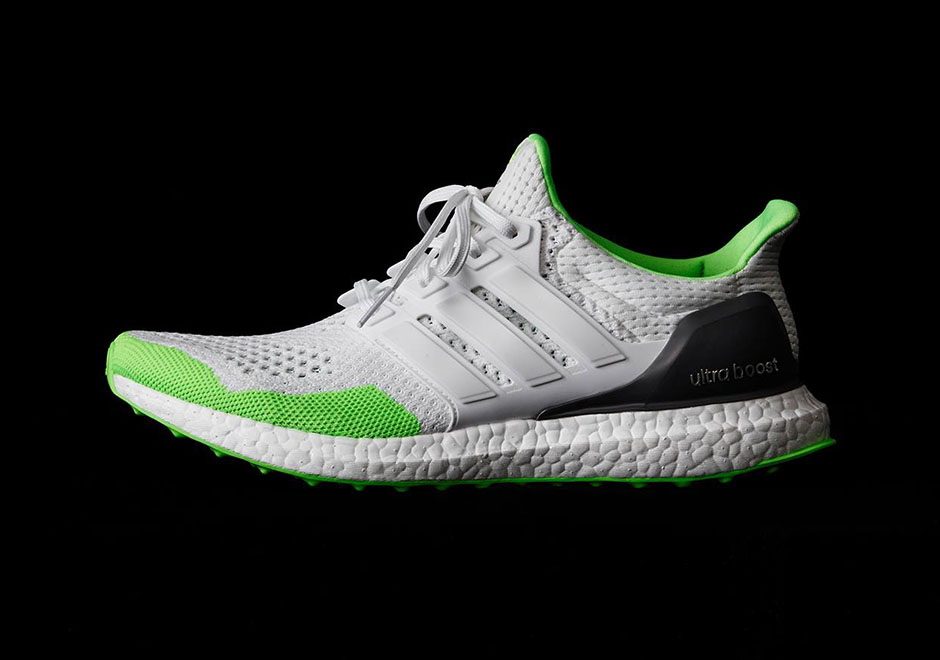
Desperate to keep some kind of momentum going, in 2018 Adidas even tried re-releasing two of the most popular early colourways, the OG and Creams, but nothing could be done. The circle of hype had run its course, and by 2019 the UltraBoost's golden age was over, with that year's complete redesign--dubbed the UltraBoost 19, and sharing no parts or designs with previous iterations--reverting the shoe to its original athletic purpose. Subsequent models have only continued this trend; as they've become less interesting for collectors they've become better and better athletic shoes, culminating in the recently-released UltraBoost 5, which is getting the kind of reception among runners the original UltraBoost was supposed to receive.
While Adidas' shift of focus for the line has taken the UltraBoost 1.0 out of the spotlight, it's not like the shoe is dead. Far from it; a testament to its success is that it's been elevated (as perhaps the most contemporary member) to the ranks of an all-time shoe, a sneaker that will live forever, in a pantheon alongside other eternals like the AJ1 and Superstar. To this day Adidas still releases new 1.0 colourways, still does collabs and given the company's appetite for selling the same shoes forever (Sambas!), will probably do so for as long as there's an Adidas.
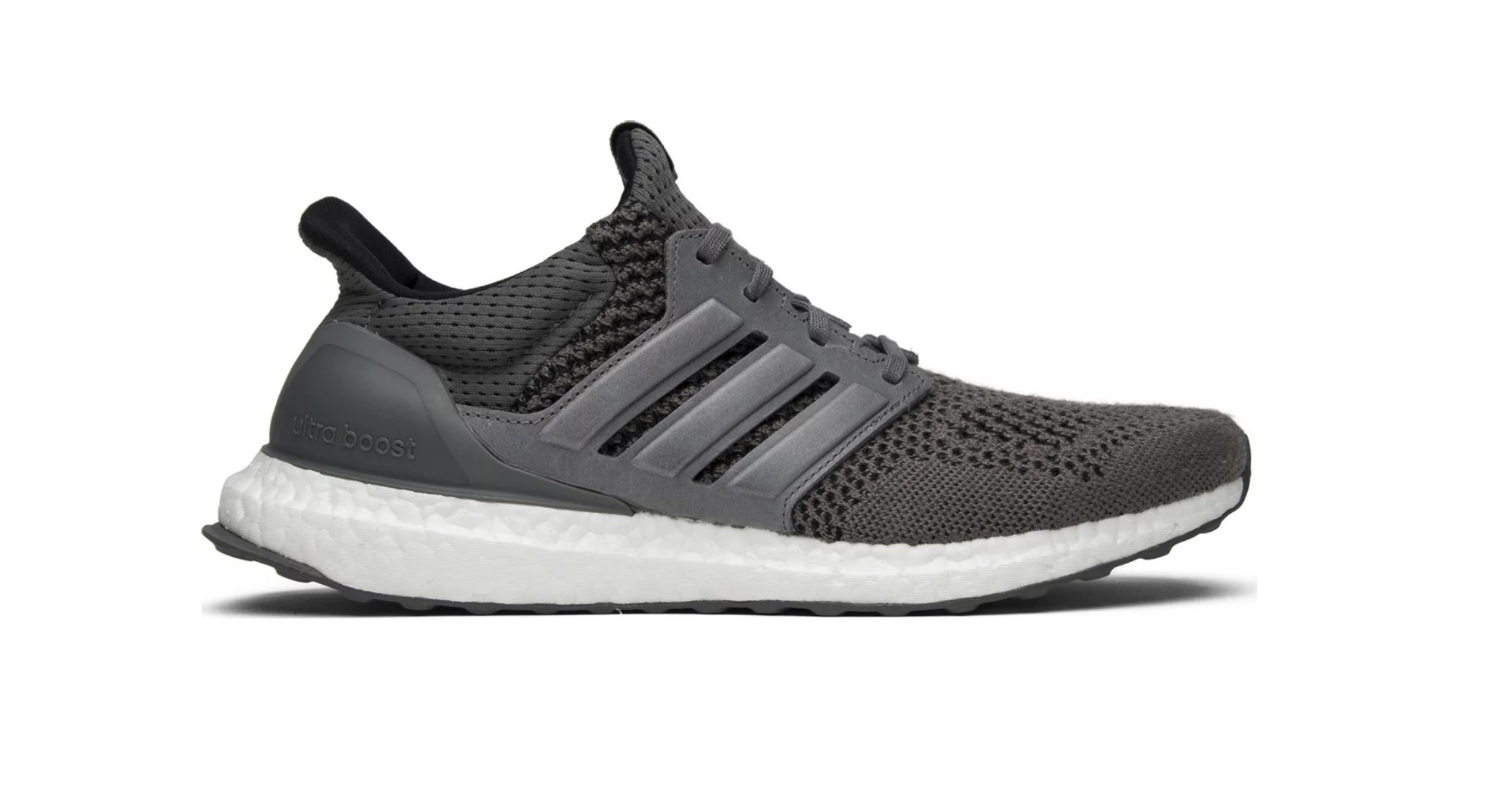
I don't want you to think this shoe's story is just about hype, how fickle it can be and how commoditised sneakerheads have become. I mean, it's partly about that, but there's more to it. Loads of shoes are "hyped" and are of zero interest to me, and when the UltraBoost 1.0's light faded I didn't suddenly lose interest in the shoe, like Andy dropping Woody in the trash, nor did the sneaker entirely disappear from the face of the planet. If anything its decline has been great news for me, because as their value has plummeted on the resale market I've been able to get hold of pairs that used to be out of reach for me for relative pocket change!
The UltraBoost 1.0 isn't just another shoe, and there was more to it than a few years spent as the darling of the sneaker world. The engineering behind it is fascinating. It's an accidental superstar, emerging as a fashion staple when it was supposed to be a performance running shoe. It's a rare example of a huge company--at first, anyway--dealing directly with fans in a way that felt complimentary to a culture, not exploitative of it. Then it's demise is as sad as it was predictable, when that same company inevitably couldn't help itself and squeezed something beautiful to death.
Like most products, especially ones that end up having "fans", the UltraBoost 1.0 can be admired strictly as an object, sure. But its origins and place in the market at a point in time are just as important to its story as the materials that went into it. And the UltraBoost's story was, for a shoe, one hell of a story.
